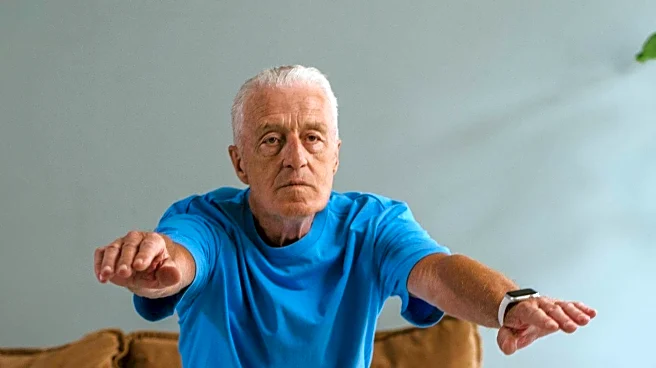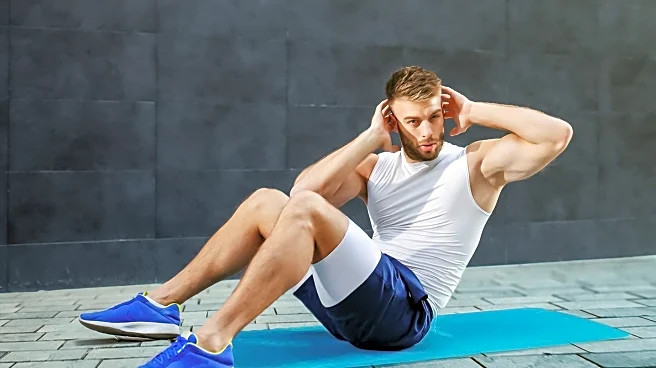What's Happening?
Walking backwards, a practice once considered unconventional, is gaining traction as a beneficial fitness strategy. Trainers and therapists are recognizing its unique advantages, which include activating different muscle groups and enhancing cognitive functions. Studies from UCLA and Harvard have shown that walking backwards engages the prefrontal cortex, improving memory and decision-making. This exercise alters the typical walking pattern, shifting the load from quads to hamstrings and calves, which can aid in knee rehabilitation and reduce back pain. Additionally, walking backwards increases calorie burn by approximately 40% compared to forward walking at the same pace, making it an efficient workout option.
Why It's Important?
The growing interest in walking backwards highlights a shift towards innovative fitness practices that offer both physical and mental benefits. This exercise not only strengthens stabilizing muscles and improves gait speed, but also enhances cognitive functions such as focus and problem-solving. For older adults, these benefits translate into better confidence and reduced risk of falls. The increased calorie burn associated with walking backwards presents an attractive option for those seeking efficient workouts. As more people adopt this practice, it could lead to broader acceptance of unconventional exercises in mainstream fitness routines.
What's Next?
As walking backwards gains popularity, fitness centers and trainers may begin incorporating it into regular workout programs. This could lead to the development of specialized equipment or classes focused on reverse walking techniques. Additionally, further research may explore its long-term benefits on cognitive health and physical rehabilitation. The fitness industry might see an increase in demand for exercises that challenge traditional movement patterns, promoting overall well-being.
Beyond the Headlines
The adoption of walking backwards as a fitness strategy reflects a broader trend towards holistic health practices that integrate physical and mental wellness. This approach aligns with the growing emphasis on exercises that not only improve physical fitness but also enhance cognitive functions. As society becomes more aware of the interconnectedness of body and mind, unconventional practices like walking backwards may become integral to comprehensive wellness programs.









